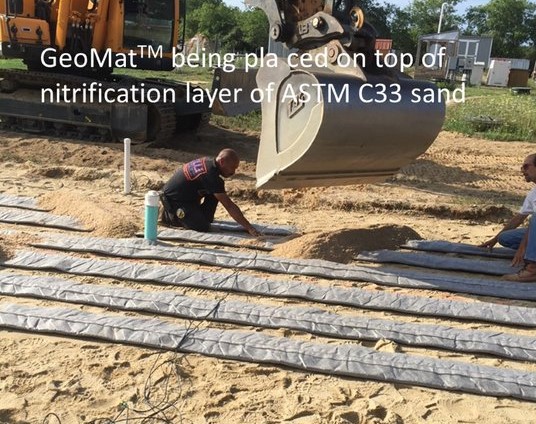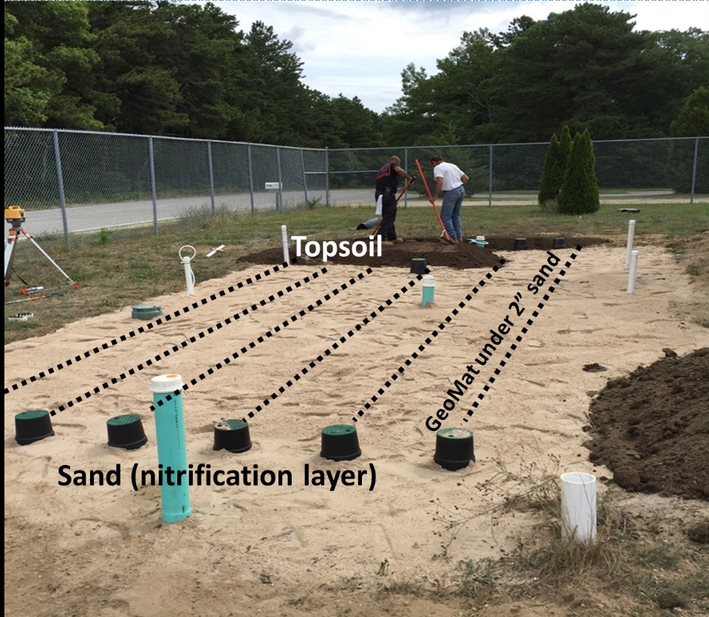Project Description

It was Albert Einstein who once said, “Everything should be as simple as possible, but not simpler.” Following work by Dr. Will Robertson, University of Waterloo (see the Silt System) and some work done with the lined systems (see Saturated System), we understood that those two complexities (the ability to standardize the silt mixture and the installation of a liner) add costs and construction uncertainties that prompted the question: Could we make it simpler while still removing nitrogen?
The use of a standard ASTM C-33 sand and the absence of a containment liner makes the construction of the system on Cape Cod and elsewhere much like a standard system in specified fill. During a typical installation in our area, an excavation down 48 inches is not uncommon, with the native soil being replaced with “Title 5 sand” which is basically ASTM C-33 sand. In this simple layered approach, the bottom 18 inches of sand is mixed 1:1 by volume with sawdust. Beneath that layer is a 2” layer of pea stone which acts as a textural break in the media and attenuates water passage, allowing for the sand/sawdust layer to hold more water and have a depth of saturation. This is believed to encourage the anoxic conditions necessary for denitrification. Above the sand/sawdust layer is again the standard ASTM C-33 sand which is used for a nitrifying layer.

Samples from the system are collected by means of pan lysimeters placed beneath the entire treatment system. Again, this treatment configuration represents the simplest of the designs, however there remain questions regarding the longevity of the sawdust carbon source since it is likely that the sand/sawdust layer is not completely saturated and hence subject to carbon loss due to aerobic decomposition similar to composting. There is one MASSTC installation and four field installations from which we hope to resolve some of the remaining questions.
